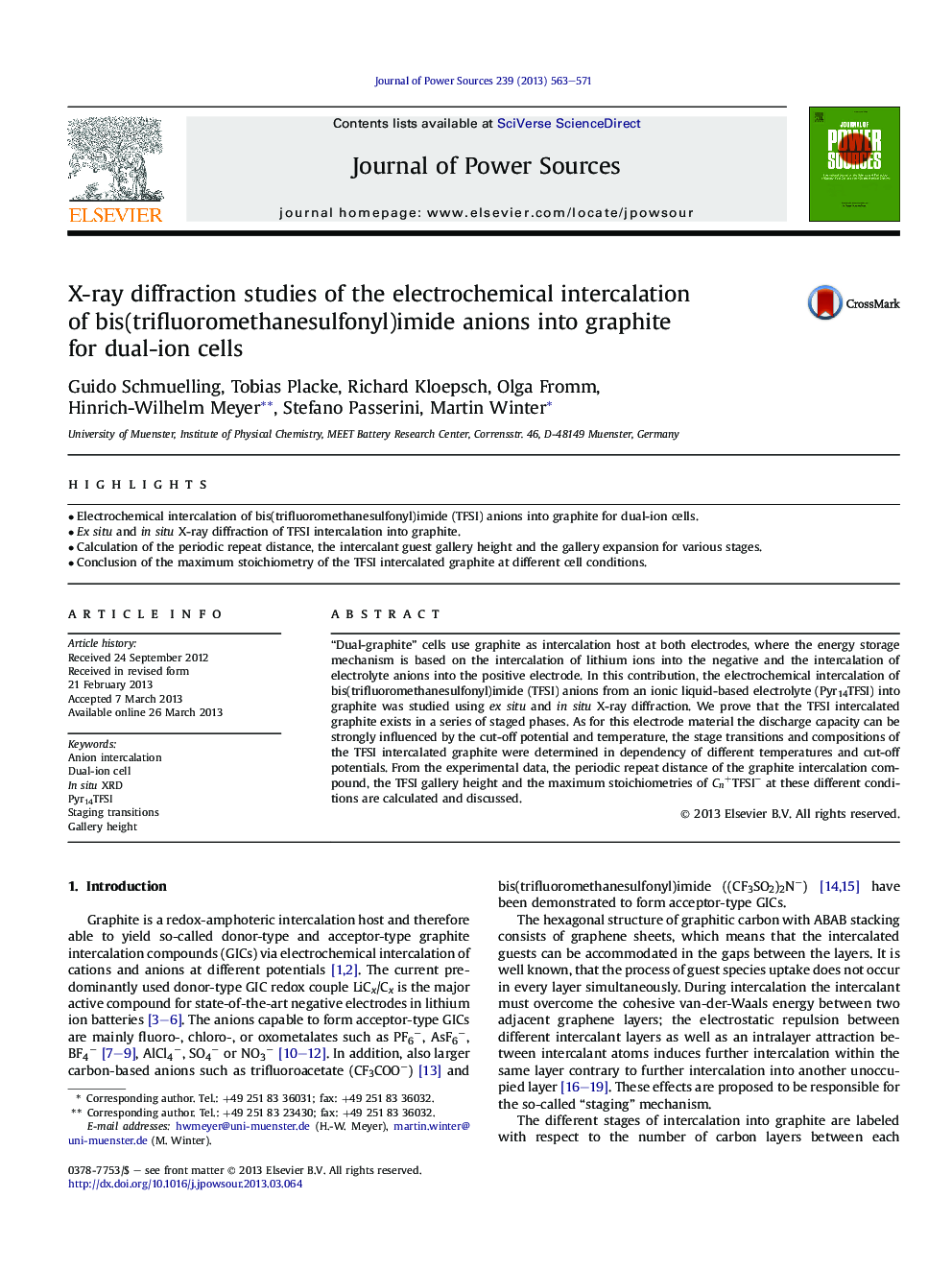| Article ID | Journal | Published Year | Pages | File Type |
|---|---|---|---|---|
| 7740911 | Journal of Power Sources | 2013 | 9 Pages |
Abstract
“Dual-graphite” cells use graphite as intercalation host at both electrodes, where the energy storage mechanism is based on the intercalation of lithium ions into the negative and the intercalation of electrolyte anions into the positive electrode. In this contribution, the electrochemical intercalation of bis(trifluoromethanesulfonyl)imide (TFSI) anions from an ionic liquid-based electrolyte (Pyr14TFSI) into graphite was studied using ex situ and in situ X-ray diffraction. We prove that the TFSI intercalated graphite exists in a series of staged phases. As for this electrode material the discharge capacity can be strongly influenced by the cut-off potential and temperature, the stage transitions and compositions of the TFSI intercalated graphite were determined in dependency of different temperatures and cut-off potentials. From the experimental data, the periodic repeat distance of the graphite intercalation compound, the TFSI gallery height and the maximum stoichiometries of Cn+TFSIâ at these different conditions are calculated and discussed.
Related Topics
Physical Sciences and Engineering
Chemistry
Electrochemistry
Authors
Guido Schmuelling, Tobias Placke, Richard Kloepsch, Olga Fromm, Hinrich-Wilhelm Meyer, Stefano Passerini, Martin Winter,
